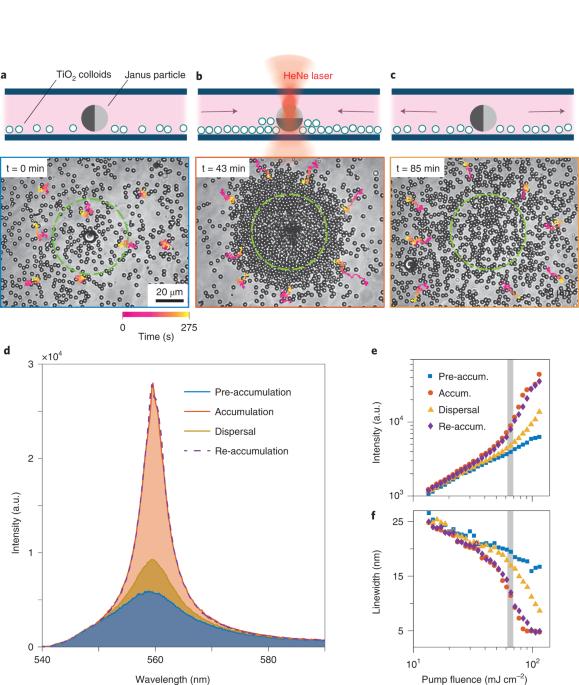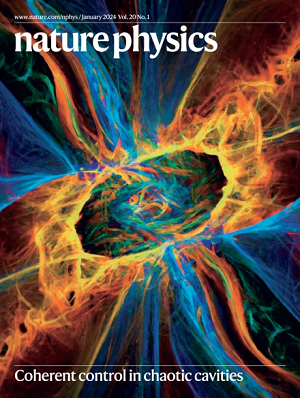Self-organized lasers from reconfigurable colloidal assemblies
IF 17.6
1区 物理与天体物理
Q1 PHYSICS, MULTIDISCIPLINARY
引用次数: 21
Abstract
Non-equilibrium assemblies, where units are able to harness available energy to perform tasks, can often self-organize into dynamic materials that uniquely blend structure with functionality and responsiveness to their environment. The integration of similar features in photonic materials remains challenging but is desirable to manufacture active, adaptive and autonomous photonic devices. Here we show the self-organization of programmable random lasers from the reversible out-of-equilibrium self-assembly of colloids. The random lasing originates from the optical amplification of light undergoing multiple scattering within the dissipative colloidal assemblies and therefore depends crucially on their self-organization behaviour. Under external light stimuli, these dynamic random lasers are responsive and present a continuously tuneable laser threshold. They can therefore reconfigure and cooperate by emulating the ever-evolving spatiotemporal relationship between structure and functionality that is typical of many non-equilibrium assemblies. Experiments inspired by the behaviour of active matter show that an external optical stimulus can spatially reconfigure colloidal random lasers and continuously tune their lasing threshold.

自组织激光器可重构胶体组件
非平衡组件中的单元能够利用可用能量来执行任务,通常能够自组织成动态材料,将结构与功能性和对环境的响应性独特地融合在一起。在光子材料中集成类似的功能仍然具有挑战性,但对于制造主动、自适应和自主光子设备来说却是可取的。在这里,我们展示了胶体可逆失衡自组装产生的可编程随机激光器的自组织过程。随机激光源于光在耗散胶体组装体内部发生多重散射时的光学放大,因此在很大程度上取决于它们的自组织行为。在外部光刺激下,这些动态随机激光器反应灵敏,激光阈值可持续调节。因此,它们可以通过模拟结构与功能之间不断演变的时空关系来重新配置和合作,而这种时空关系正是许多非平衡组装体的典型特征。受活性物质行为启发而进行的实验表明,外部光学刺激可以在空间上重新配置胶体随机激光器,并持续调节其激光阈值。
本文章由计算机程序翻译,如有差异,请以英文原文为准。
求助全文
约1分钟内获得全文
求助全文
来源期刊

Nature Physics
物理-物理:综合
CiteScore
30.40
自引率
2.00%
发文量
349
审稿时长
4-8 weeks
期刊介绍:
Nature Physics is dedicated to publishing top-tier original research in physics with a fair and rigorous review process. It provides high visibility and access to a broad readership, maintaining high standards in copy editing and production, ensuring rapid publication, and maintaining independence from academic societies and other vested interests.
The journal presents two main research paper formats: Letters and Articles. Alongside primary research, Nature Physics serves as a central source for valuable information within the physics community through Review Articles, News & Views, Research Highlights covering crucial developments across the physics literature, Commentaries, Book Reviews, and Correspondence.
 求助内容:
求助内容: 应助结果提醒方式:
应助结果提醒方式:


